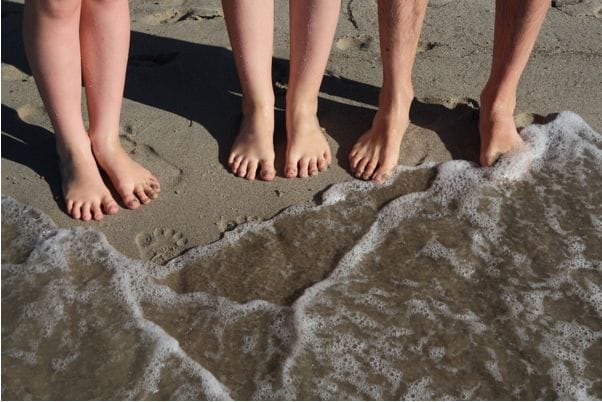Smartphone cameras have made huge strides in recent years. They now make good quality photography easy for almost anyone, and can produce outstanding results even with basic, affordable equipment. This is great for helping normal people take great photos that they would have previously needed an expensive camera for, and have expanded what’s possible in photography for everyone.
But there’s one type of photography that can be reasonably difficult to do properly, and many argue requires professional equipment. That’s wildlife photography.
Can wildlife be captured well with a smartphone? The answer to that is yes. While professional wildlife photography can take years to get right and is a speciality all of its own, it can still be done well with a smartphone. You might not be able to achieve high-end award-winning photos of wildlife with a smartphone, but you can still get great results as an amateur and create cool photos to save your memories and share with friends.
In this article, we’re going to look at a few wildlife photography tips so you can get the best results with your smartphone.
These tips are for regular amateur wildlife photography. If you find yourself on safari or somewhere where you randomly see some great wildlife and want to take some good pictures, this article is for you. This information is not for professional photographers or those who want to make money selling wildlife photography. Proper training and more expensive equipment is normally necessary if that’s your aim.
How to capture the best wildlife photos with your smartphone:
Discretion
Your smartphone won’t normally have high-powered zoom capabilities like professional camera equipment. While the resolution of a smartphone is great these days, their zooms are still lacking. A strong zoom makes it easy for wildlife photographers to stay further from the action and not alarm the animal, but this isn’t possible with a smartphone. You need to get closer—so discretion and keeping quiet should always be paramount. Not only do you not want to scare an animal off for their own wellbeing, it’ll also ruin your chances of taking a good photo.
Even some of the most dangerous animals can be shy. You don’t want to make them run away, and you also don’t want to make them scared enough to attack you. Both yours and the animals safety should always be a priority, and you shouldn’t risk either in order to take a photo.
Try switching off the sound on your phone, including shutter sound, and make as little movement as possible. Many animals have much better hearing than humans so will be able to sense even the slightest movements. Usually, this will make them run away, ruining your chance of a good photo.
Discretion is especially important when shooting animals in the wild or their natural habitat. In zoos, it isn’t as important as the animals will be used to lots of people being around, and won’t normally be fussed or bothered by much at all. But you’d much rather take a photo of an animal in the wild, right?
Make sure you’ve got a good camera on your smartphone
While smartphones have reshaped the amateur photography landscape with affordable quality for all, there’s still a lot of variation in the quality of the camera your phone has. So a better quality camera can make all the difference. One thing to remember with smartphone cameras is that they will not have high-quality optical zooms. Most of the zoom function will come from digital zoom, which will decrease the quality of the photo. Try not to zoom in too much with the digital zoom, or consider an additional optical zoom attachment if you want to take your photos to the next level.
Other things to look for when evaluating the quality of a good smartphone camera aside from zoom and megapixel capability include quality of the sensor and flash (although you shouldn’t be photographing animals at night with flash).
Keep things steady
Smartphone cameras can also suffer problems when it comes to stability. If you haven’t got additional stabilisers, make sure you hold your phone with two hands. Or consider placing the camera on a wall, chair or other stable item.
Get close
As we’ve already touched on, because your smartphone probably doesn’t have a high quality zoom, you might need to get as close to your subject (the animal) as possible. Remember: never do this if the animal is dangerous. It’s not worth the risk. Also, don’t do this if you risk scaring the animal. Some animals will be fine with humans getting close up, so these are the ones you might want to practice on until you get a better quality zoom and can photograph other types of wildlife from further away.
Be patient
You wont’ get great photos straight away, but that’s okay. It’s all a learning process anyway. The best way to get better is to practice, so get out and start snapping some wildlife and learn what works and what doesn’t. Patience is key to finding the best wildlife photography. Instead of chasing an animal, wait for it to naturally come towards you instead.
Take lots of photos
Instead of just gambling on one shot, take loads. Then you can pick out the best ones later on. Burst mode can help with this, or just be liberal with your snappy finger. You can also look at these amazing travel locations to take selfie photos, another great way to practice taking travel photos with your smartphone.
Do some learning
To take even better photos, you might want to buy a photography book or read some online guides. A photography course can also be a fun and affordable way to dramatically improve your photography skills. And when you really start to take things seriously, you might want to consider upgrading to a standalone camera.
Learning things like composition can also help. This is a huge subject that can take years to get to grips with, but just learning a few key tips can make a huge difference.
Hopefully, these tips in this article are enough to get you started on your way to taking great wildlife photos with your smartphone.




